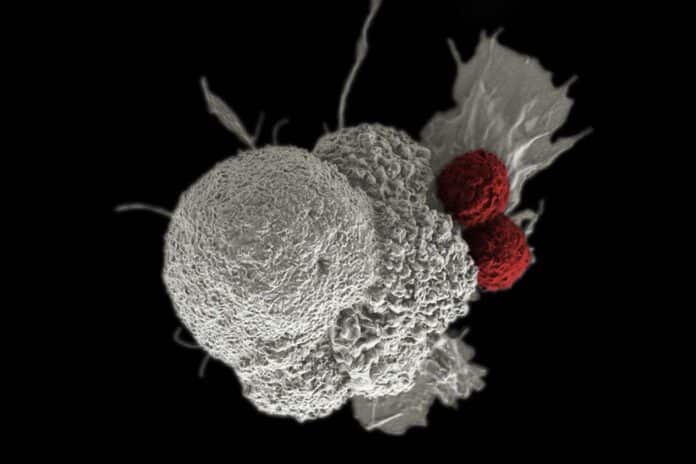Nasopharyngeal carcinoma (NPC) is uncommon cancer that affects the tissue in the upper region of the throat behind the nose. This condition is more prevalent in Southeast Asia and Southern China and is closely connected to the Epstein-Barr virus (EBV), which is known to cause a number of cancers.
The virus known as EBV, which possesses its own DNA, is linked to several malignancies, including stomach and lymphoma. When it infects an individual, the virus’s DNA binds to the host’s chromosomes in the cell nucleus. Because methylation shuts off the virus’s DNA, it remains silent and benign for the most part.
However, occasionally, EBV can turn on genes in the host cells, including ones that promote the growth of malignancies. It achieves this, among other things, by activating particular genes by focusing on heterochromatin, the compacted DNA found in the host cell. This technique, which EBV uses to activate typically inactive genes, is called “enhancer infestation.”
Despite research on the subject in other cancer types, it remains unclear how EBV interacts with host cell DNA in non-papillomatous cancer (NPC). More convincing evidence is still needed about this cross-species genomic interaction and the ensuing modifications in DNA structure in NPC.
To close this knowledge gap, researchers from the Graduate School of Medicine at Chiba University in Japan and Associate Professor Melissa Jane Fullwood of the School of Biological Sciences at Nanyang Technological University in Singapore (NTU Singapore) have collaborated with scientists from Kanazawa University, Hamamatsu University School of Medicine, Japan, and Duke-NUS Medical School, Singapore, to conduct a new study.
To fully comprehend the epigenomic rewiring and genetic dysregulation, scientists used the following methods: in vitro EBV infection in human EBV (-) cell lines HK1 and NPC-TW01; C666-1 EBV (+)-NPC cell lines; NP69T immortalized nasopharyngeal epithelial cells; clinical NPC biopsy samples; and Hi-C, 4C-seq, CHIP-seq, and RNA-seq analyses.
Researchers discovered that in the AT-rich, low-gene C666-1 cells, the Epstein-Barr virus (EBV) genomes mostly interacted with specific regions of the host DNA. These areas, known as EBV-interacting regions (EBVIRs), were found in the host’s heterochromatin’s inactive B compartment.
They found that by turning on enhancers in NPC cells, the extrachromosomal DNA (ecDNA) of the EBV may alter the structure of the host’s heterochromatin. This was identified using methods such as Hi-C and CHIP-seq. Additionally, they observed that the EBVIRs’ histone proteins differed significantly from those of NP69T cells, suggesting that the genome’s structure had changed.
Further validation of these results was obtained using actual clinical NPC biopsy samples.
In addition, aberrant enhancer activation or changes in the genome’s structure caused irregular gene expression. Hi-C analysis found that H3K4me3(+) was one of the major genes impacted by the epigenome changes brought on by the interaction between EBV and the host.
This finding was validated by an RNA-seq study of NP69T and C666-1 cells, which showed that C666-1 cells expressed more of 14 H3K4me3(+) genes than did NP69T cells. In NPC cells, the EBV-interacting regions (EBVIRs) changed the expression of particular target genes such as PLA2G4A, PTGS2, and CITED2. The elevated expression of these genes aided the development of cancer cells. The development of NPC cells was significantly inhibited when these genes were silenced.
Professor Atsushi Kaneda from the Graduate School of Medicine, Chiba University, Japan, said, “Our findings will generate interest and create awareness among people on the ability of a virus to epigenetically alter our body’s cells and cause diseases such as cancer. Moreover, the elucidated epigenetic mechanisms of cancer development will enable the development of novel cancer therapeutic strategies other than genome target therapy.”
Journal Reference:
- Harue Mizokami, Atsushi Okabe, Ruchi Choudhary et al. Enhancer infestation drives tumorigenic activation of inactive B compartment in Epstein-Barr virus-positive nasopharyngeal carcinoma. EBioMedicine. DOI: 10.1016/j.ebiom.2024.105057
